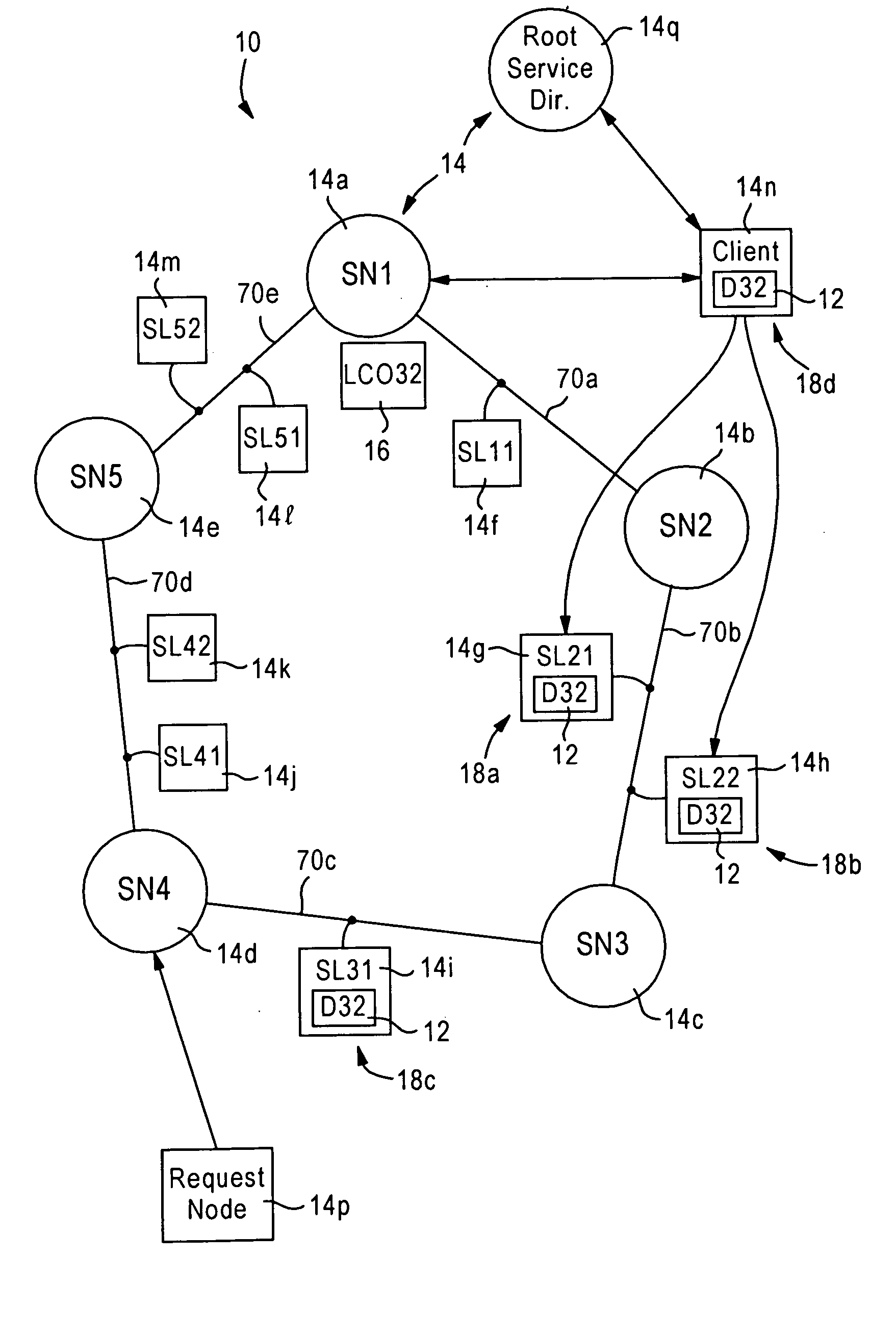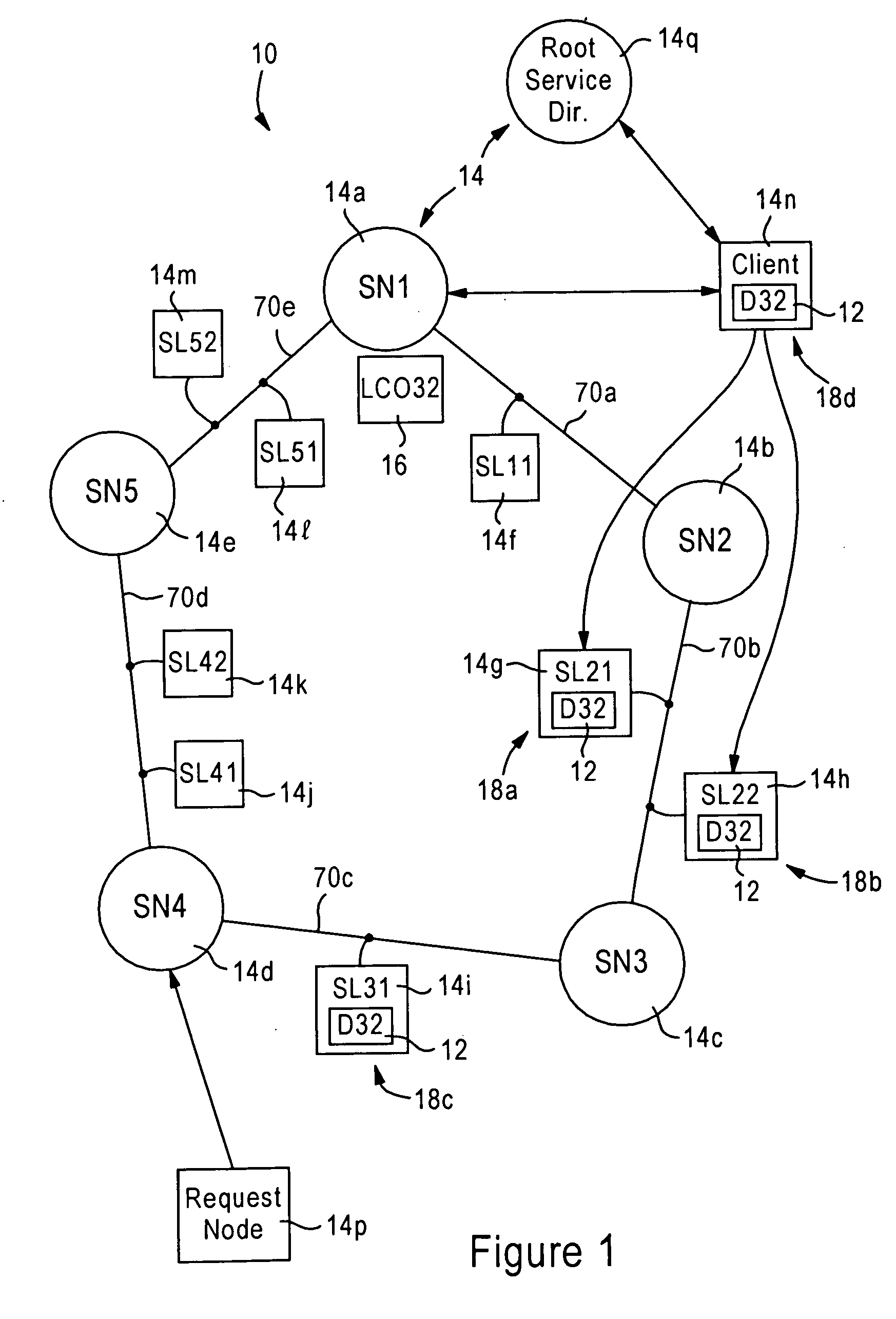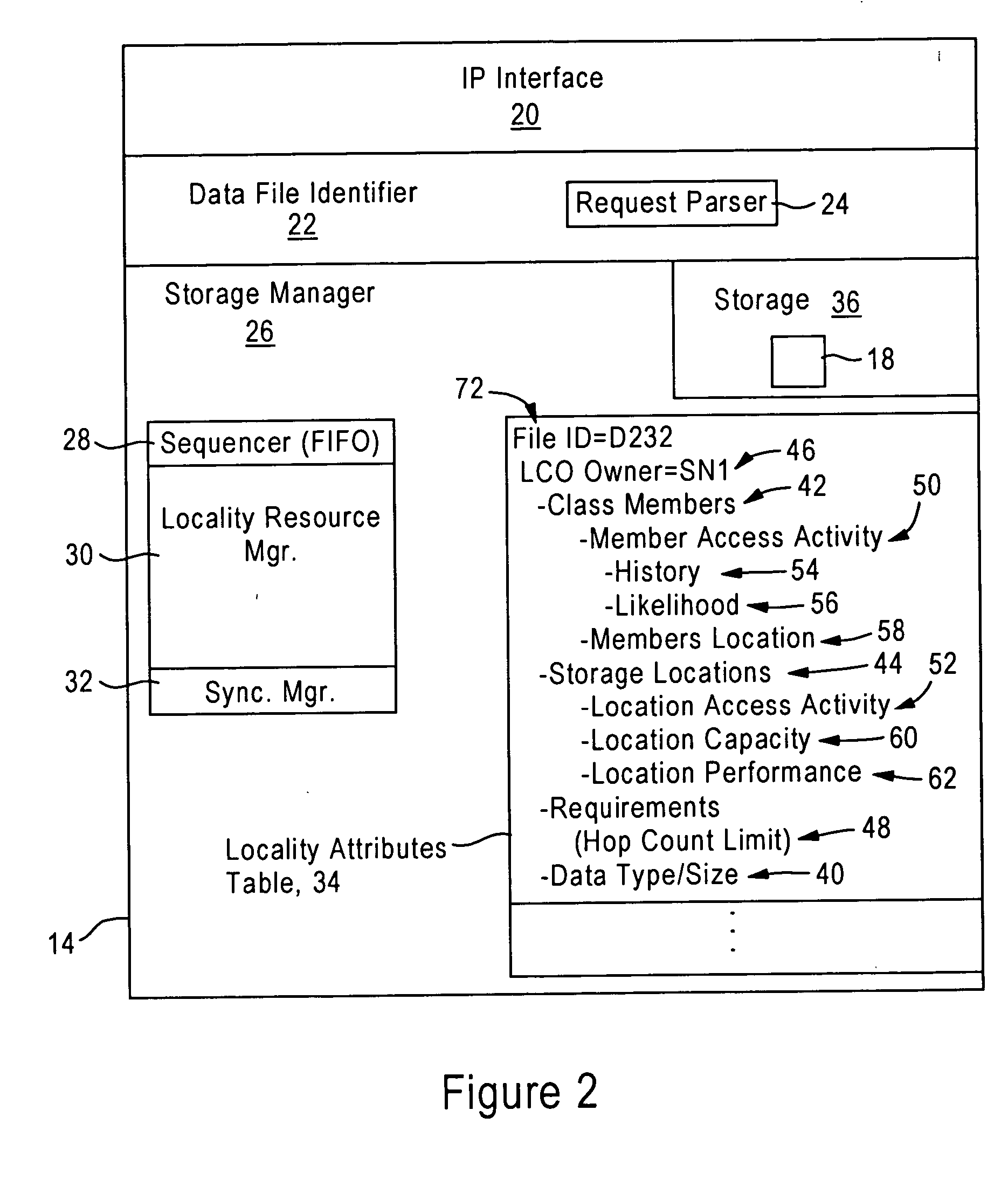Arrangement in a network for passing control of distributed data between network nodes for optimized client access based on locality
- Summary
- Abstract
- Description
- Claims
- Application Information
AI Technical Summary
Benefits of technology
Problems solved by technology
Method used
Image
Examples
Embodiment Construction
[0028]FIG. 1 is a diagram illustrating a network 10 configured for providing distributed services, for example distributed storage of a message 12, according to an embodiment of the present invention. The network 10 may be configured as a conventional Ethernet-based network, or may be configured as a mobile ad hoc network as described by the Mobile Ad-Hoc Networks (MANET) Working Group of the Internet Engineering Task Force.
[0029] The network 10 is composed of network nodes 14, for example client workstations such as laptop computers, stationery workstations, and the like. A particular feature of the disclosed embodiment is that the methods described herein do not necessarily rely on a client / server based protocol that requires a centralized server, but rather relies on providing distributed services among different network nodes 14 according to a peer-to-peer based model.
[0030] In addition, FIG. 1 illustrates a logical diagram overlying an existing network, for example an Interne...
PUM
 Login to View More
Login to View More Abstract
Description
Claims
Application Information
 Login to View More
Login to View More - R&D
- Intellectual Property
- Life Sciences
- Materials
- Tech Scout
- Unparalleled Data Quality
- Higher Quality Content
- 60% Fewer Hallucinations
Browse by: Latest US Patents, China's latest patents, Technical Efficacy Thesaurus, Application Domain, Technology Topic, Popular Technical Reports.
© 2025 PatSnap. All rights reserved.Legal|Privacy policy|Modern Slavery Act Transparency Statement|Sitemap|About US| Contact US: help@patsnap.com



